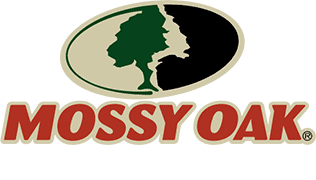A 1031 Exchange is a tax strategy that lets real estate investors swap one property for another while deferring capital gains taxes. Named after IRS Section 1031, it’s like hitting a “pause” button on taxes when you sell investment properties. Instead of paying taxes upfront, you reinvest the entire sale proceeds into a similar property. This keeps more money working for you, whether upgrading to a larger farm, diversifying into hunting land, or shifting to income-generating rentals. At Mossy Oak Properties, we help landowners navigate these swaps, matching sellers with high-value replacement properties that fit IRS rules.
The catch? It is not a free pass. Taxes are deferred, not erased, and there are strict deadlines. You have 45 days to identify a new property and 180 days to close. But the payoff is real for those willing to play by the rules, like more cash to grow your portfolio, flexibility to adapt to market shifts, and a smoother path to passing wealth to heirs. Think of it as trading up without the tax hit slowing you down.
Key 1031 Exchange Benefits
- Tax Deferral
Skip immediate capital gains taxes by rolling profits into a new property. This keeps your money tied to growth, not tied up with the IRS. For example, selling a $500k parcel lets you reinvest the full amount instead of losing 20%+ to taxes. - Increased Buying Power
Because taxes are deferred, you can afford larger or higher-value properties. A $1M sale could mean upgrading to a $1.2M timber tract or adding a second parcel, compounding long-term returns. - Portfolio Growth & Diversification
Shift from stagnant land to assets like leased farmland, recreational properties, or timberland. Diversification reduces risk. If one market dips, others balance it out. - Estate Planning Advantages
Heirs inherit properties at a “stepped-up” basis, wiping out deferred taxes. This lets families build generational wealth without the IRS taking a cut later. - Cash Flow Potential
Swap low-yield land for income-generating assets. Think hunting leases, crop-sharing farmland, or rental cabins turning dirt into monthly revenue.
1031 Exchange Pros and Cons
| Pros | Cons |
| Defers taxes, keeping more capital invested. | Strict windows to identify and close on new property; miss it, and taxes kick in. |
| Lets you pivot to better-performing land (e.g., timber to ranch). | Must buy “like-kind” real estate—no cashing out for stocks or vacations. |
| Heirs avoid capital gains on a stepped-up basis. | Rushed timelines may lead to overpaying for replacement properties. |
| Boosts cash flow by reinvesting in income-generating assets. | Deferred taxes come due if you sell outside another exchange. |
| No limit on how many times you can exchange. | Requires a Qualified Intermediary (QI), adding $1,200+ in fees. |
How 1031 Exchanges Work for Landowners
Selling underperforming land? Use a 1031 Exchange to upgrade. Swap a rocky, unproductive plot for fertile farmland or timberland with steady growth. The goal is to trade sideways or up, never down. For example, a landowner might exchange a small hunting parcel for a larger tract with leasing potential, turning a seasonal asset into a year-round income.
Timing matters. If you sell a $300k property, you must reinvest all proceeds into a same-or-higher-value replacement. Mossy Oak Properties connects sellers with pre-vetted land. Whether it is a revenue-generating ranch or a future development site. The key is aligning the swap with long-term goals, not just tax savings.
How to Maximize 1031 Exchange Benefits
Start early. Research replacement properties before listing your land. Mossy Oak’s team curates listings like timber tracts, leased farms, and recreational land that qualify as “like-kind.” This avoids last-minute scrambles during the 45-day window. Partnering with a QI is non-negotiable. They hold sale funds to keep the exchange IRS-compliant.
Think beyond today. Prioritize land with growth potential: areas near expanding towns, properties with mineral rights, or acreage suited for solar leases. For example, swapping a rural parcel for land near a new highway could mean future appreciation. Leased hunting grounds or cropland also add immediate cash flow, balancing long-term gains with short-term income.
1031 Exchange Rules Every Investor Must Follow
- Like-Kind Property Rule: Replacement land must serve a similar investment purpose (e.g., swap farmland for timberland, not a vacation home).
- Strict Timelines: 45 days to identify replacements; 180 days to close.
- Qualified Intermediary (QI): Sale funds must go through a neutral third party—you can not touch the cash.
- Equal or Greater Value: Reinvest all proceeds to defer 100% of taxes.
- Debt Matching: New property’s mortgage must meet or exceed the old one.
Steps to Complete a 1031 Exchange
- Consult Experts: Partner with a tax advisor and land specialist (like Mossy Oak) to review your goals.
- List Your Property: Sell through a QI to keep funds compliant.
- Identify Replacements Fast: Use Mossy Oak’s pre-screened listings to meet the 45-day window.
- Secure a QI: They will handle paperwork and hold funds until closing.
- Close Before Day 180: Finalize the purchase to lock in tax deferral.


